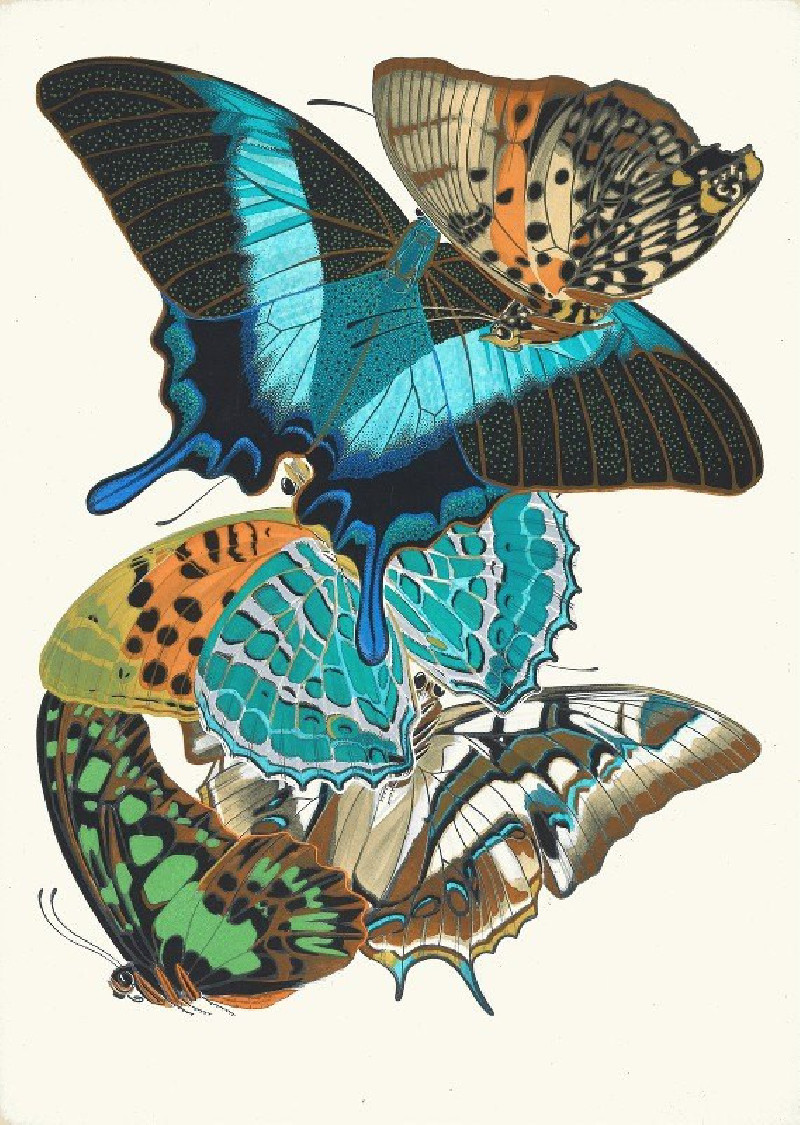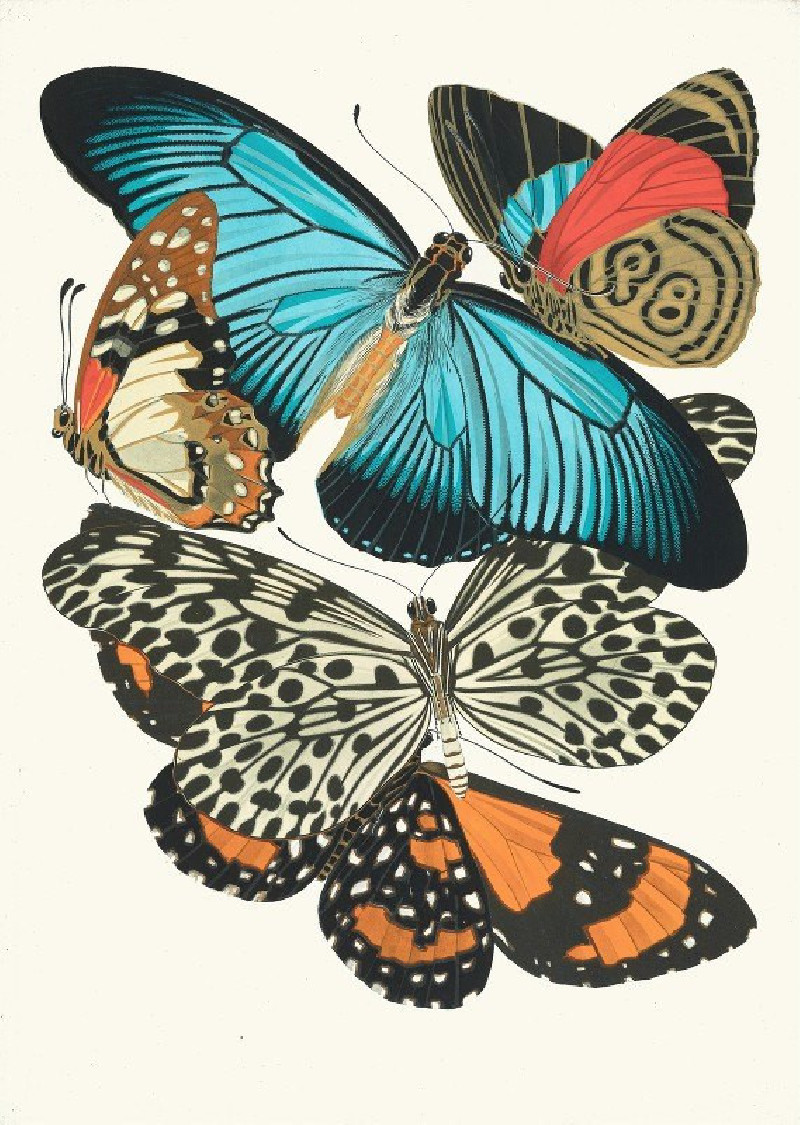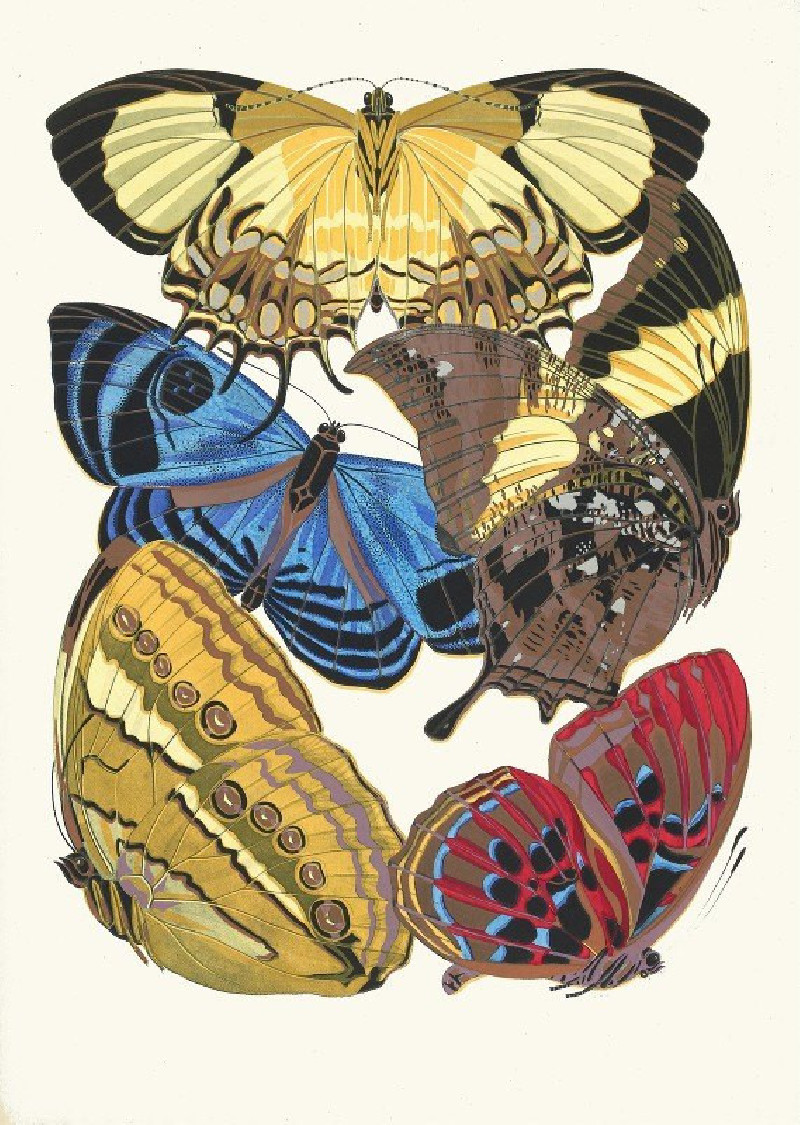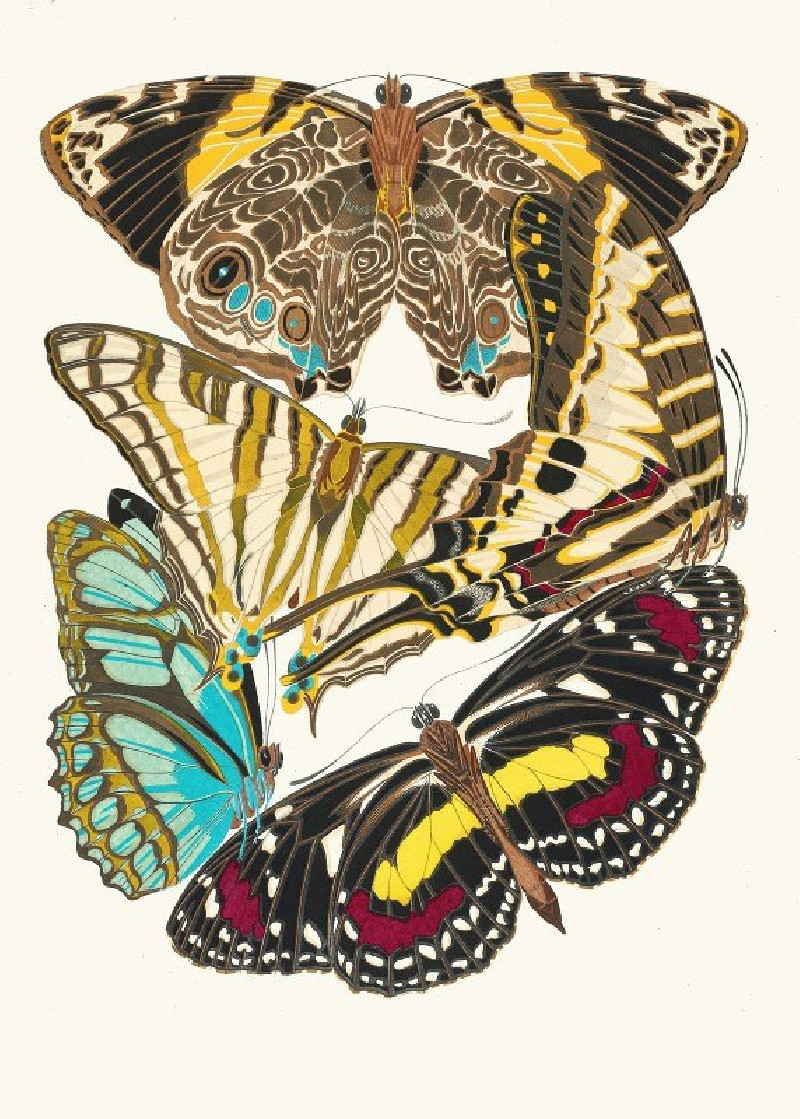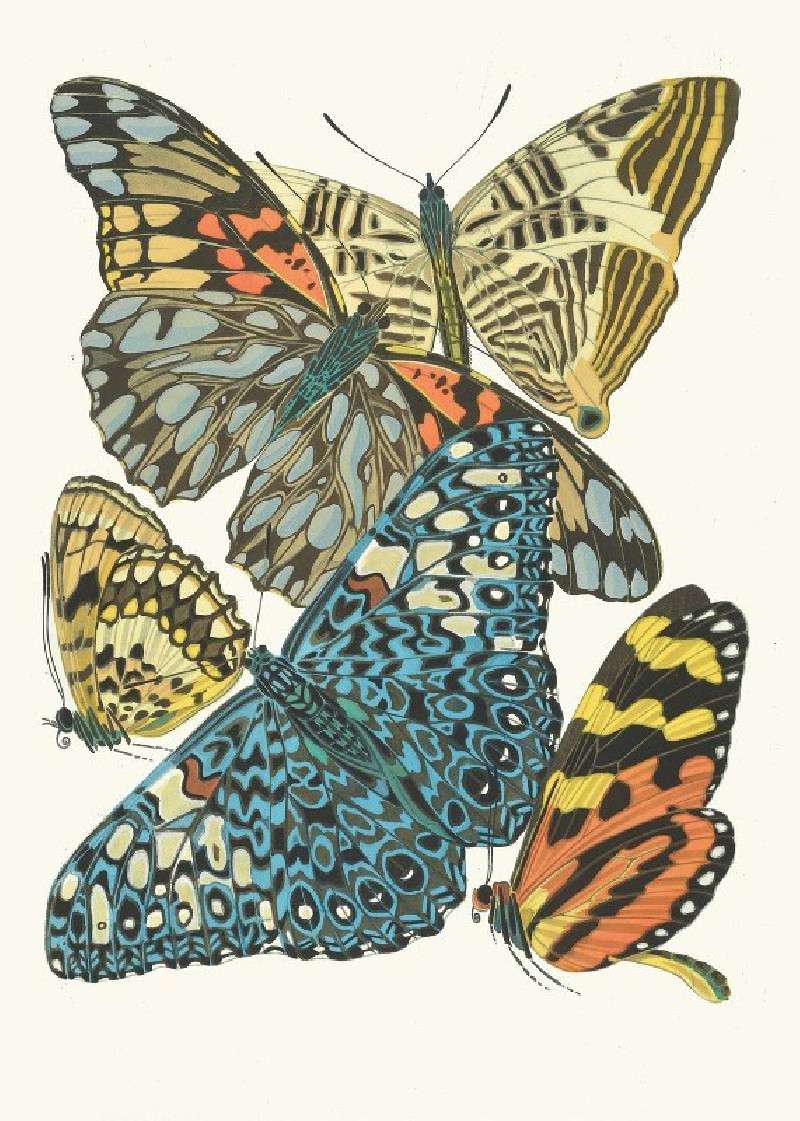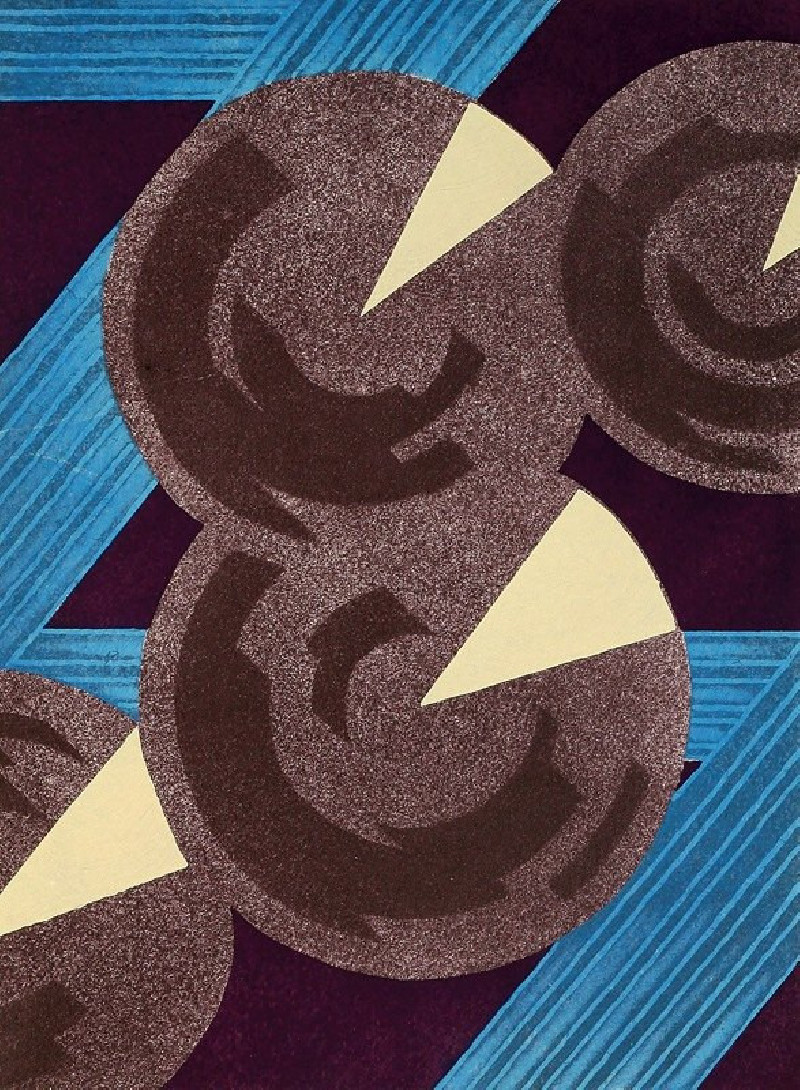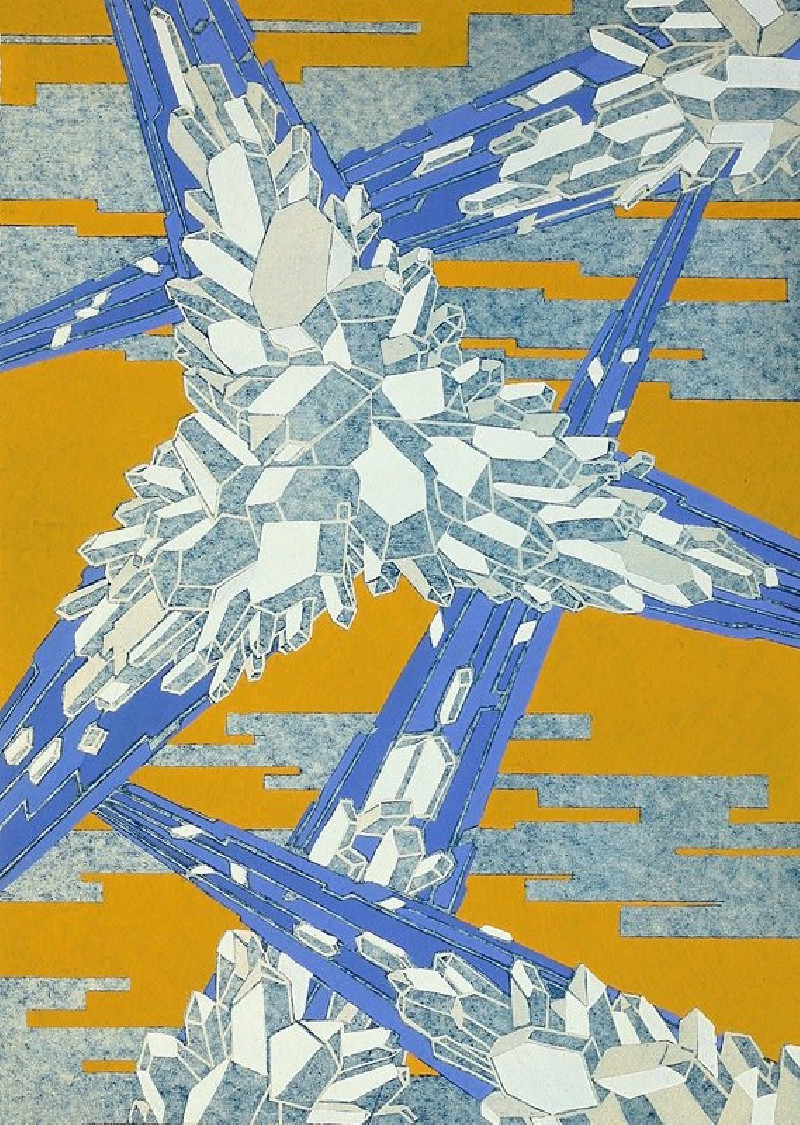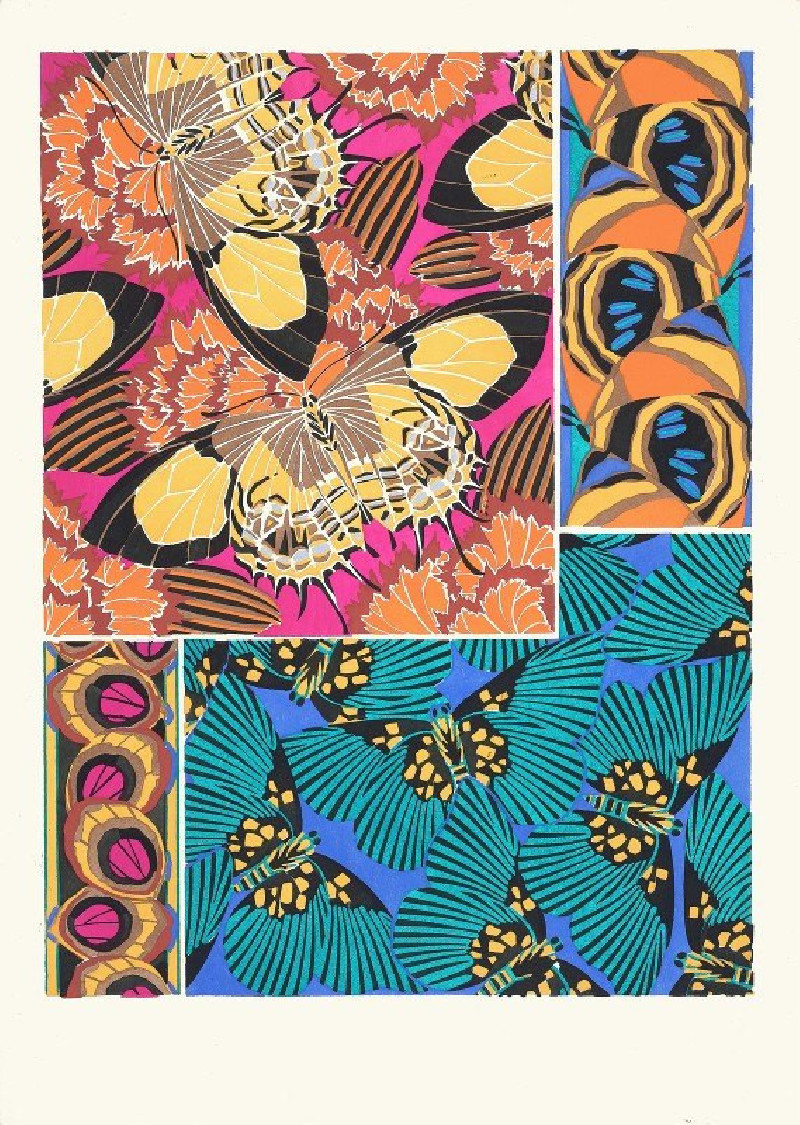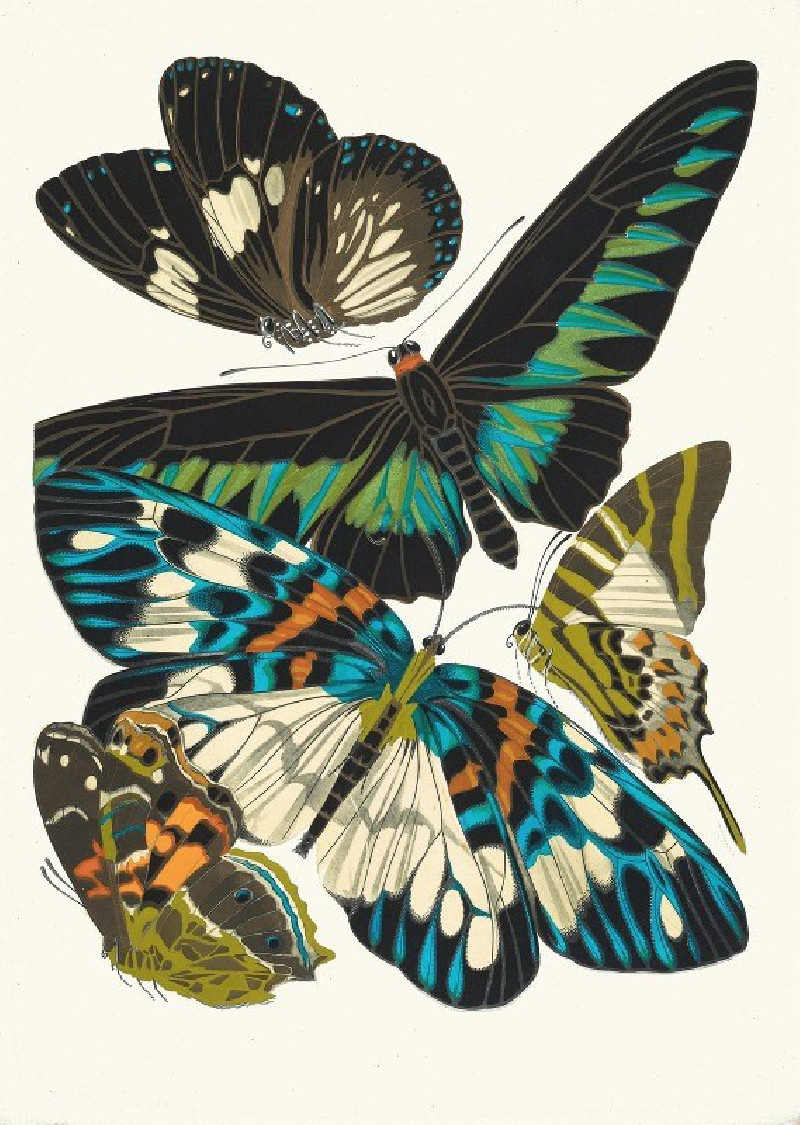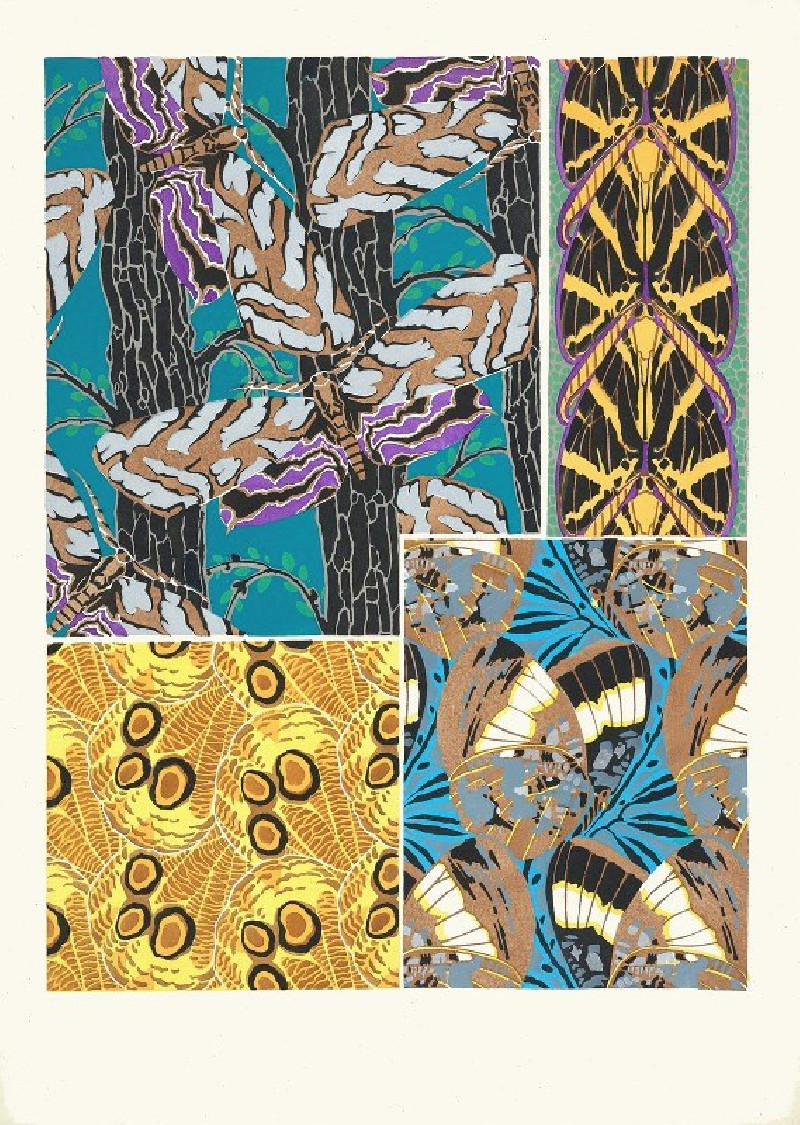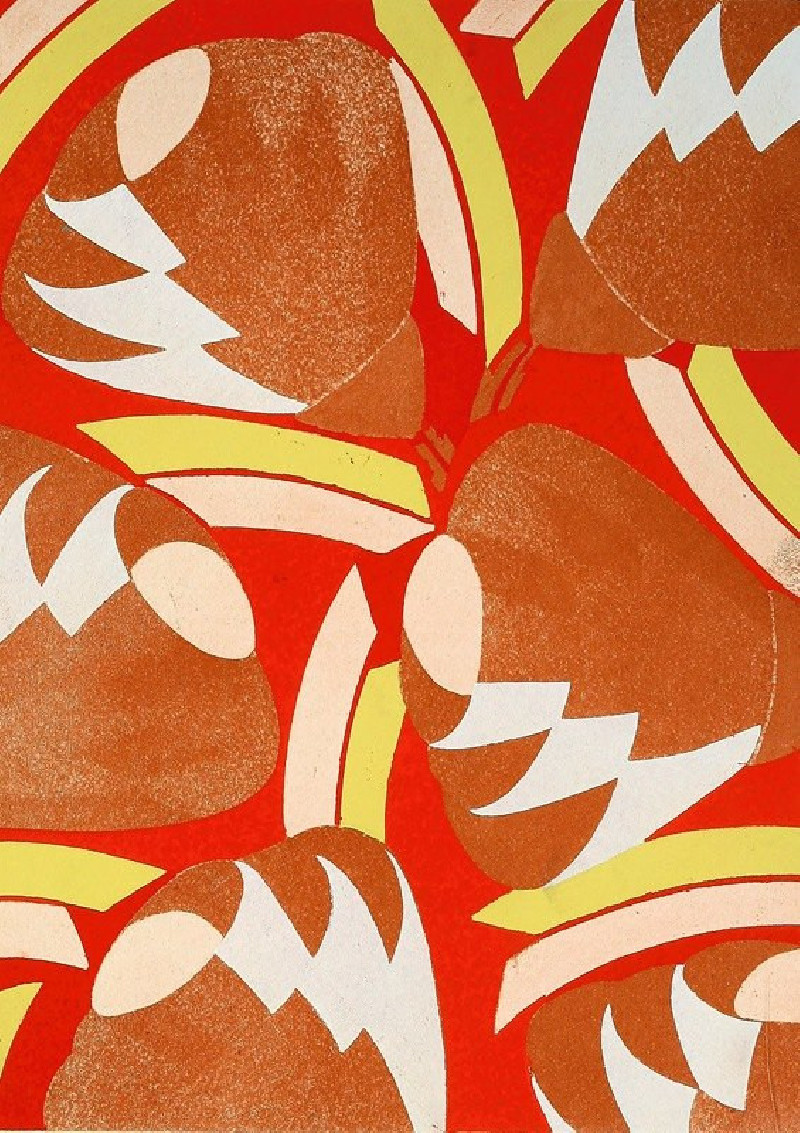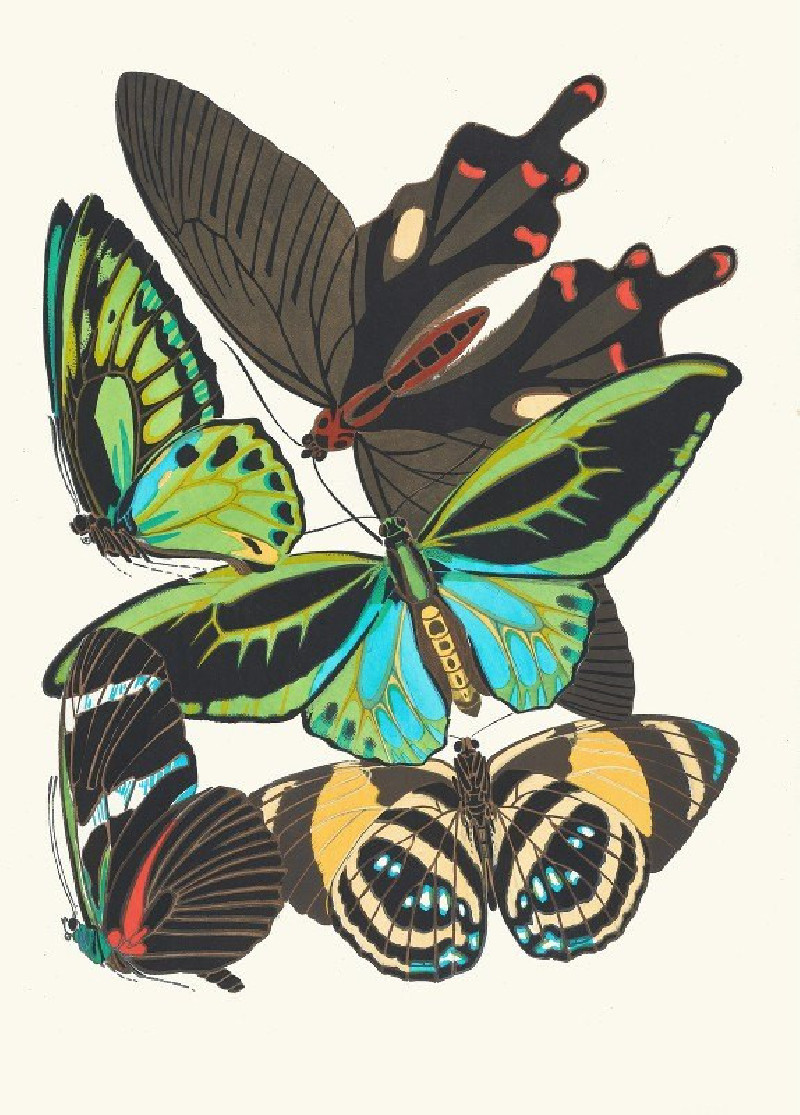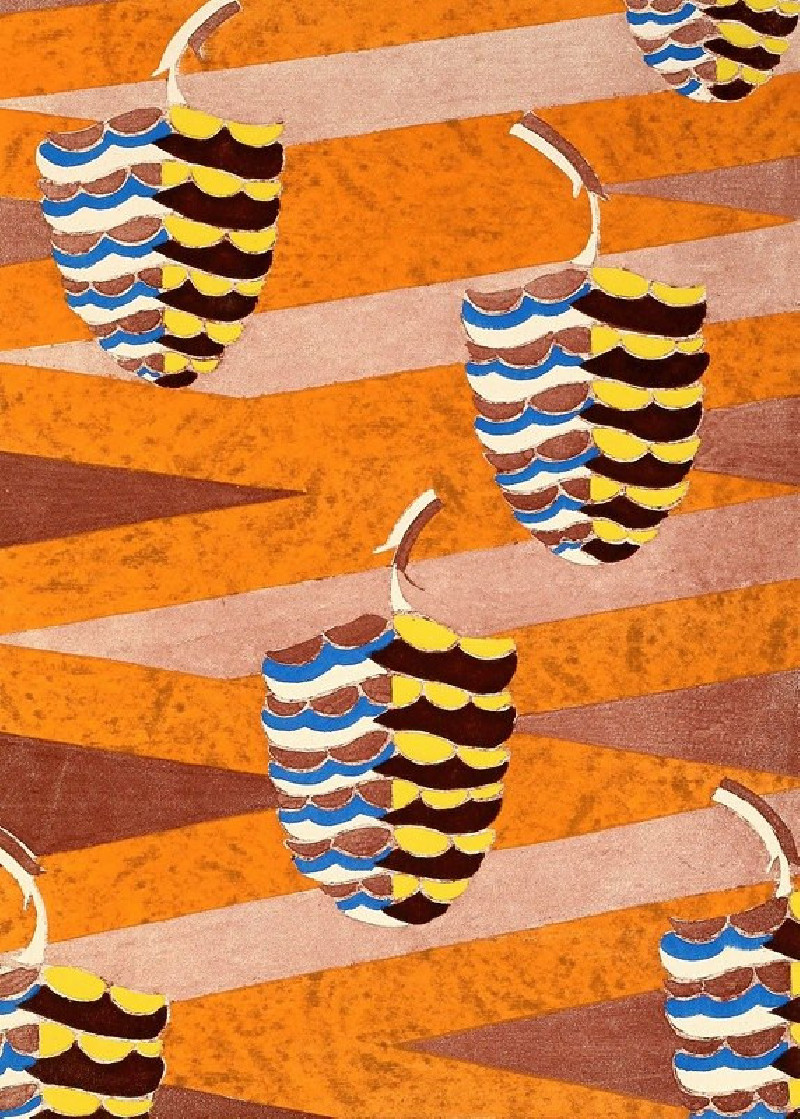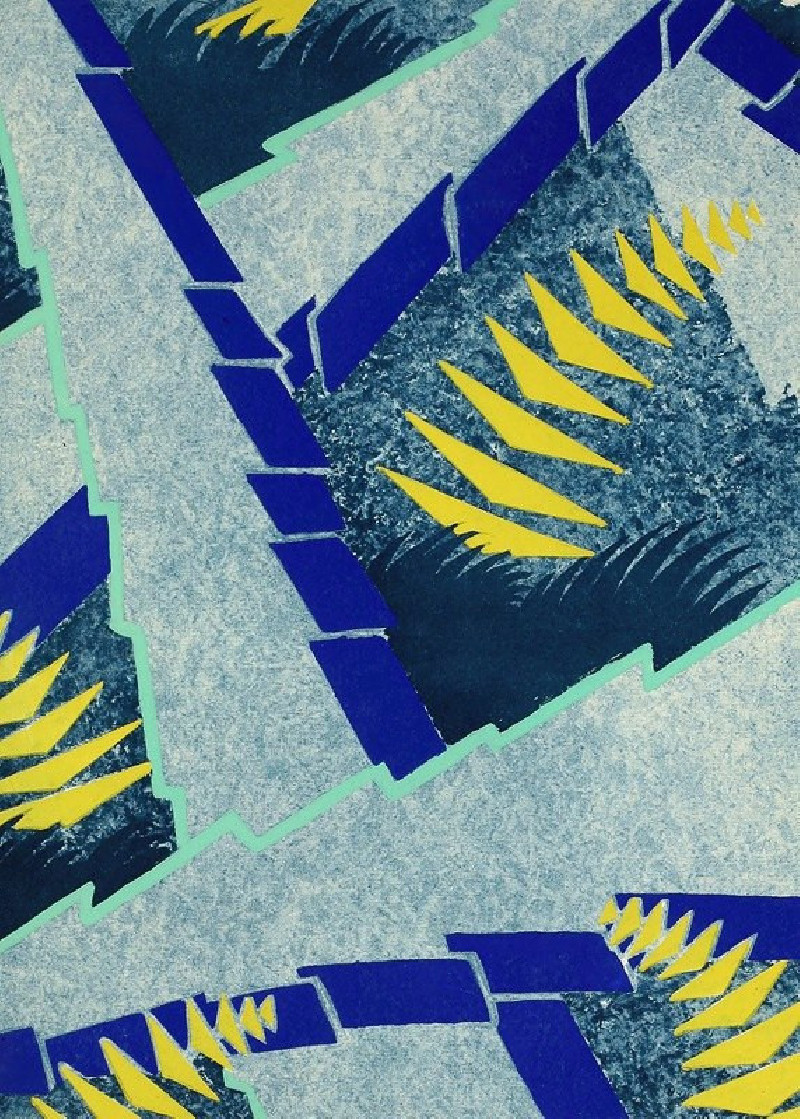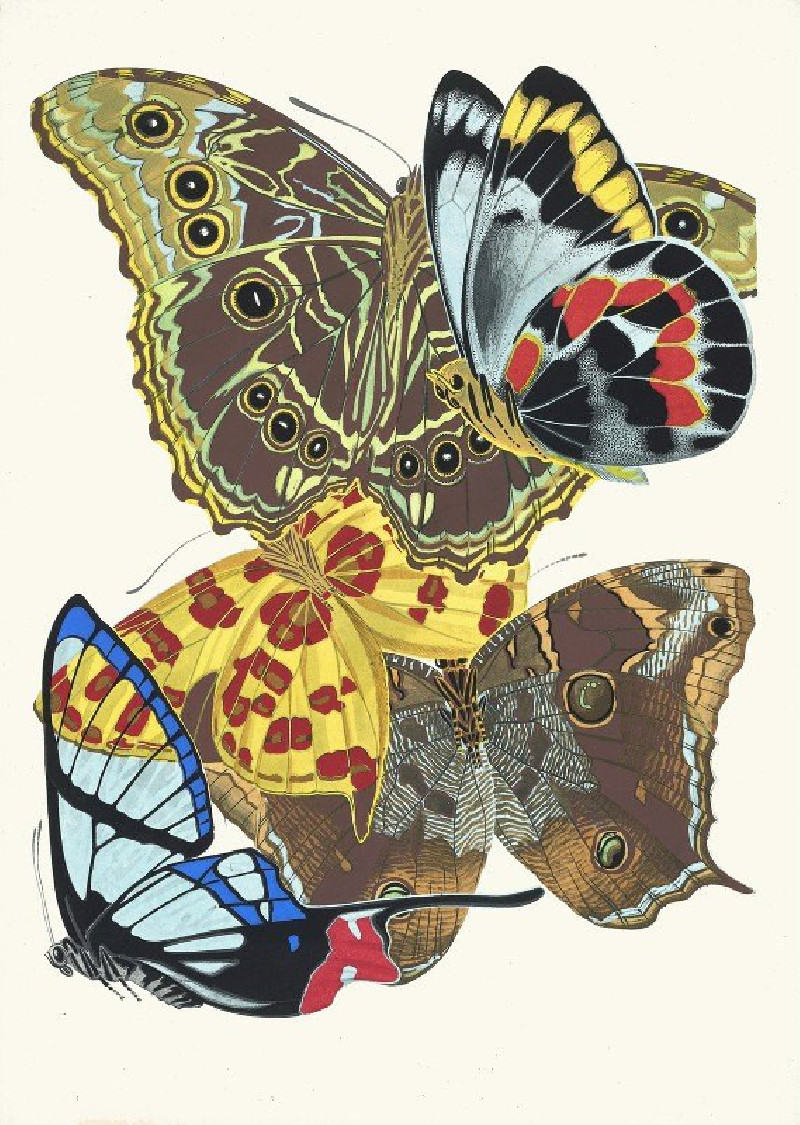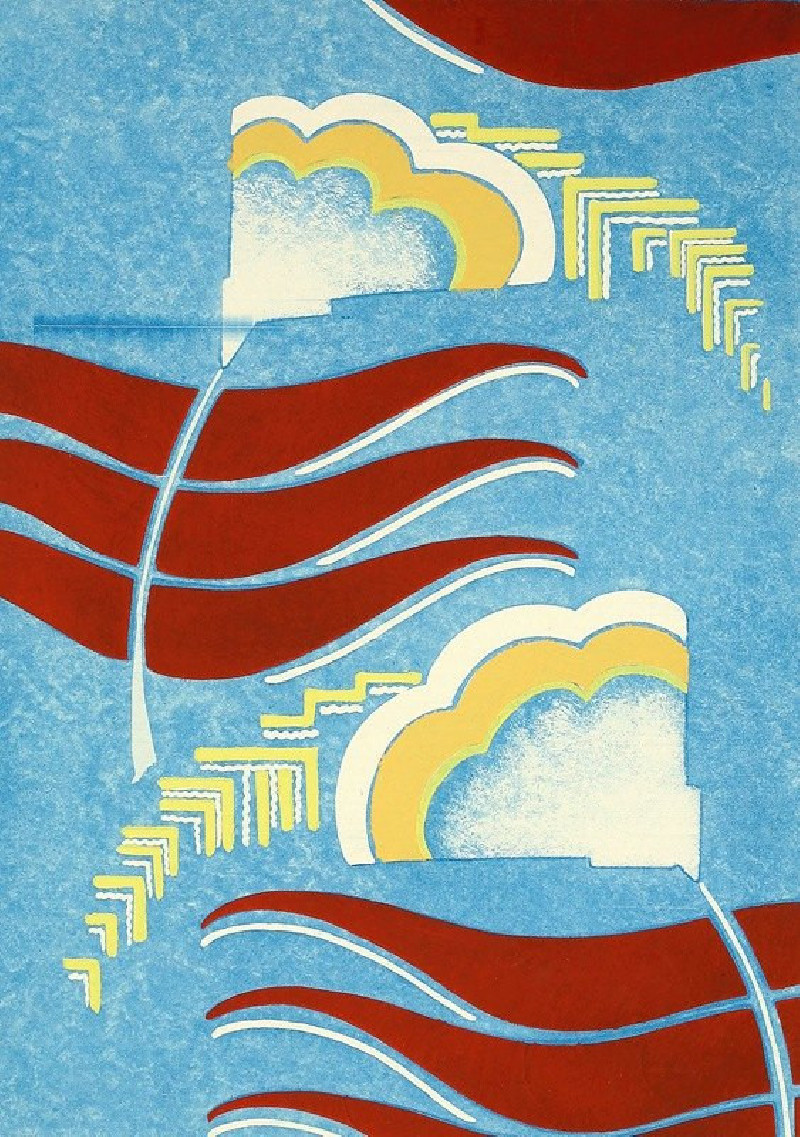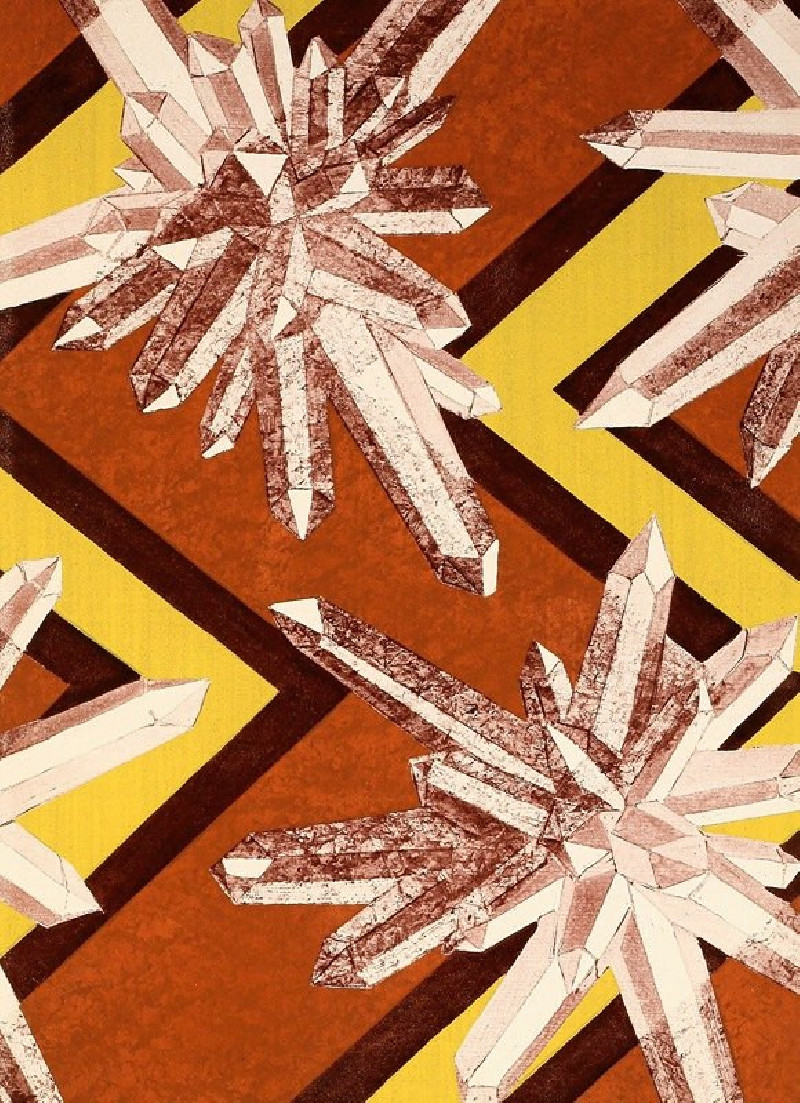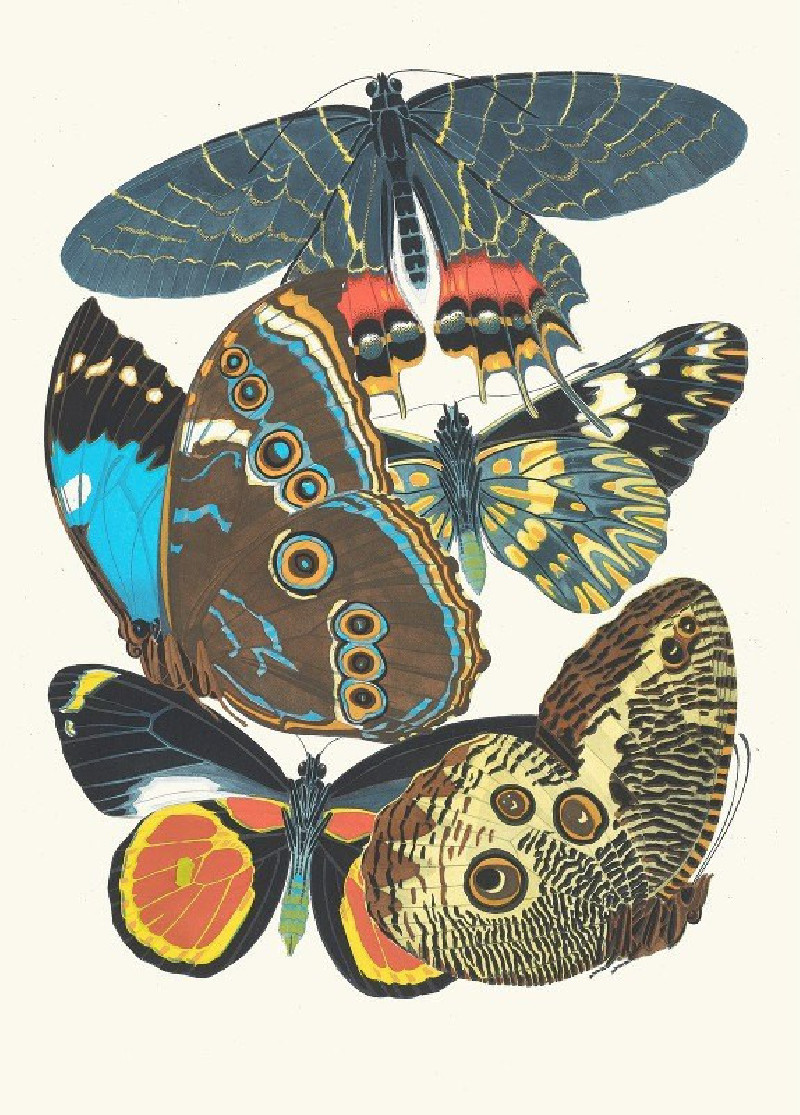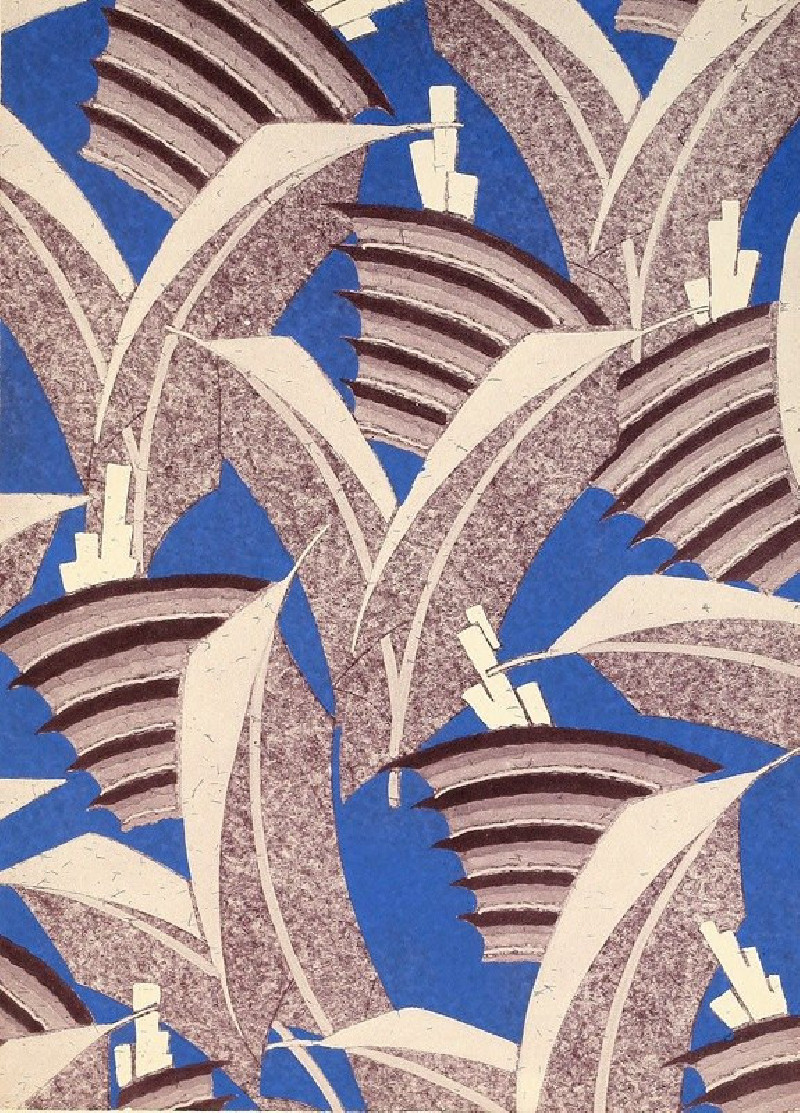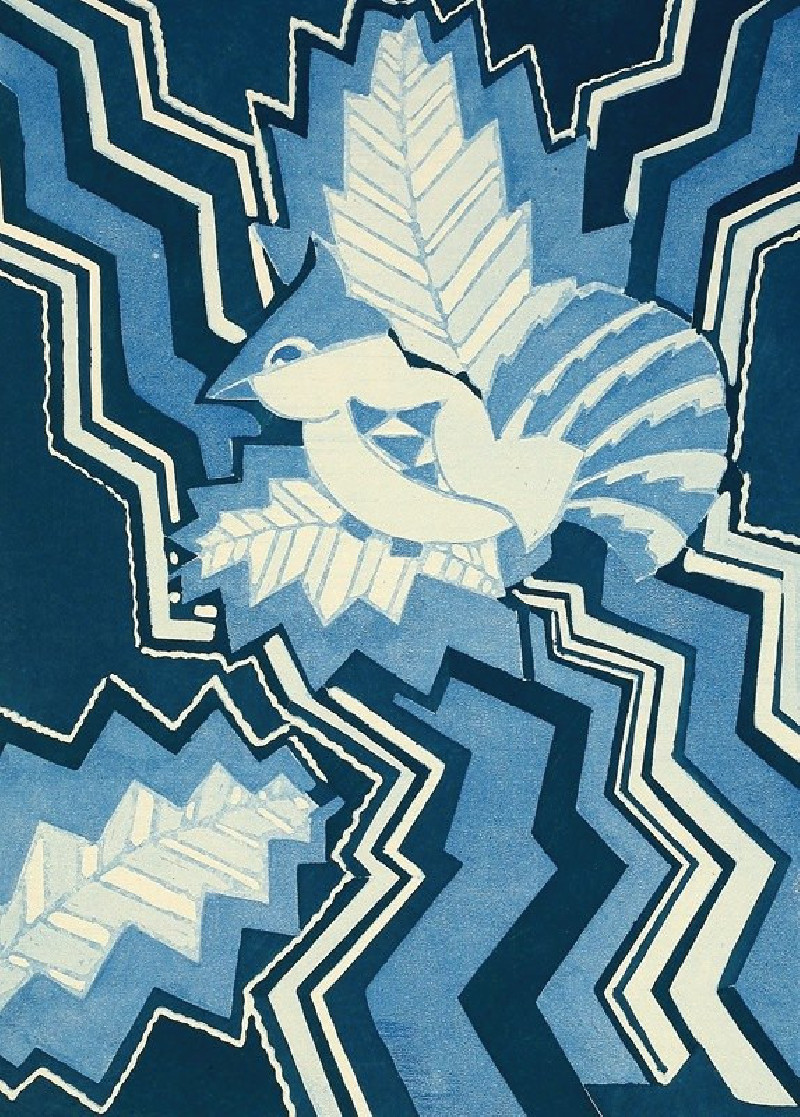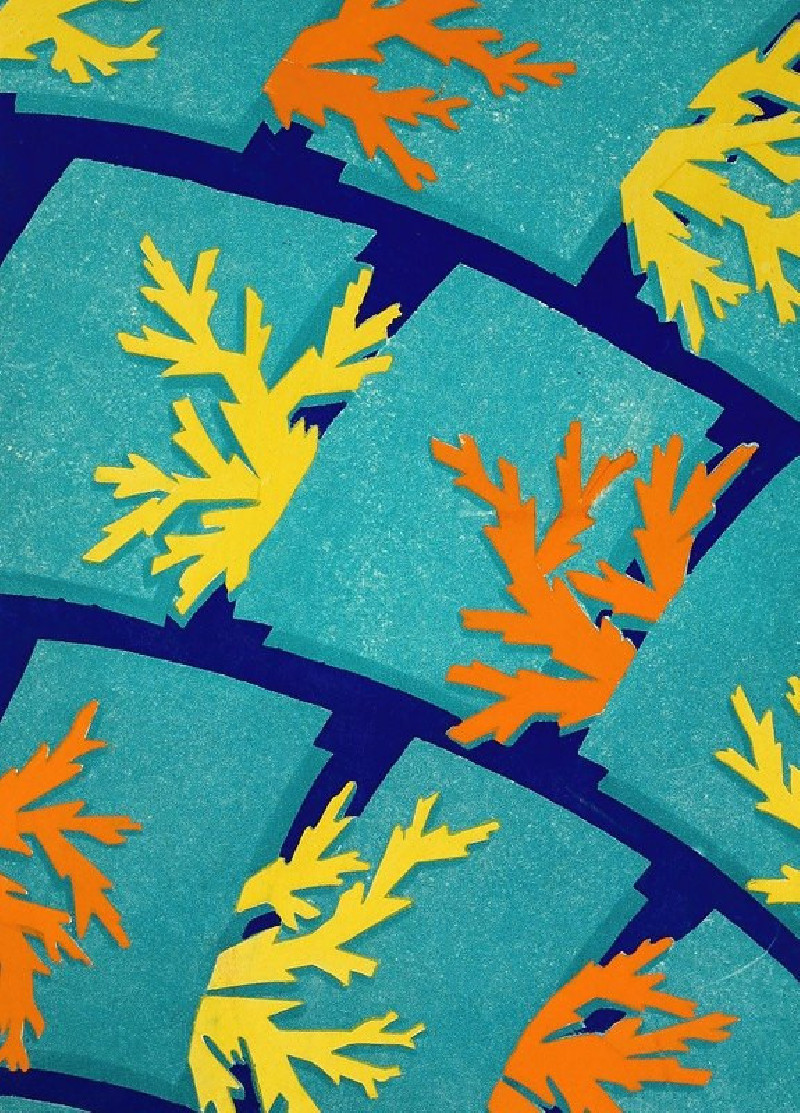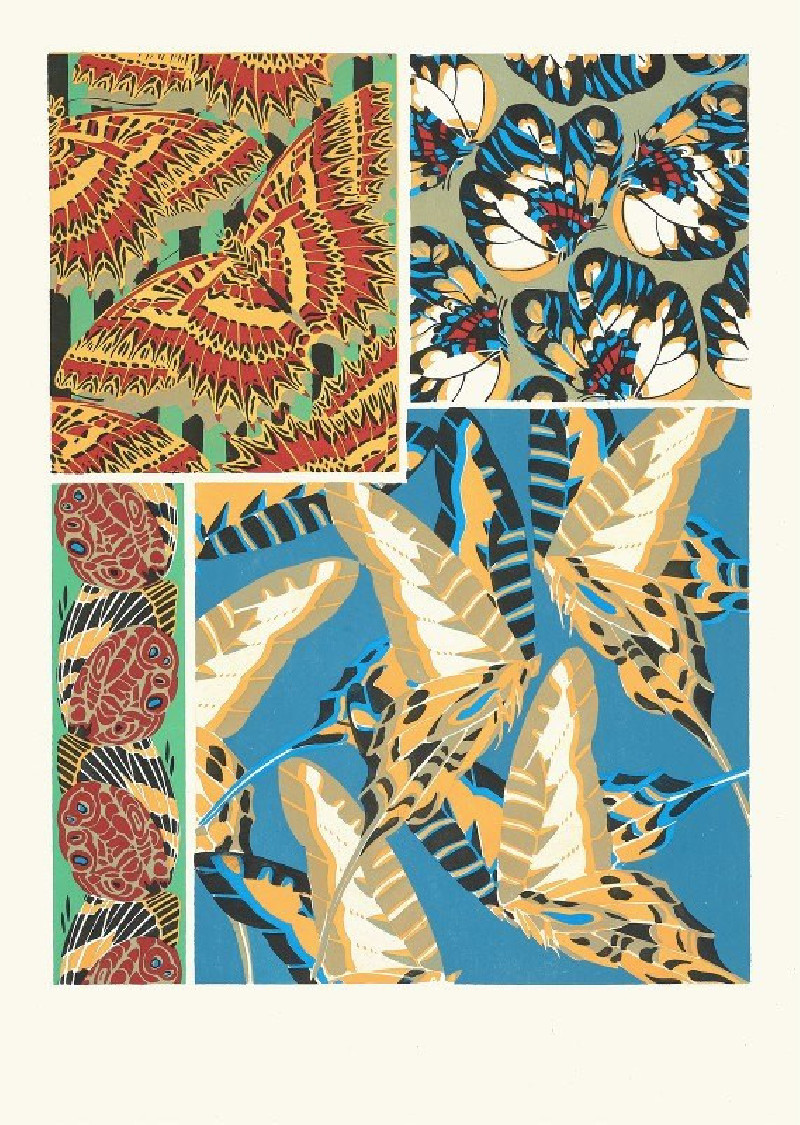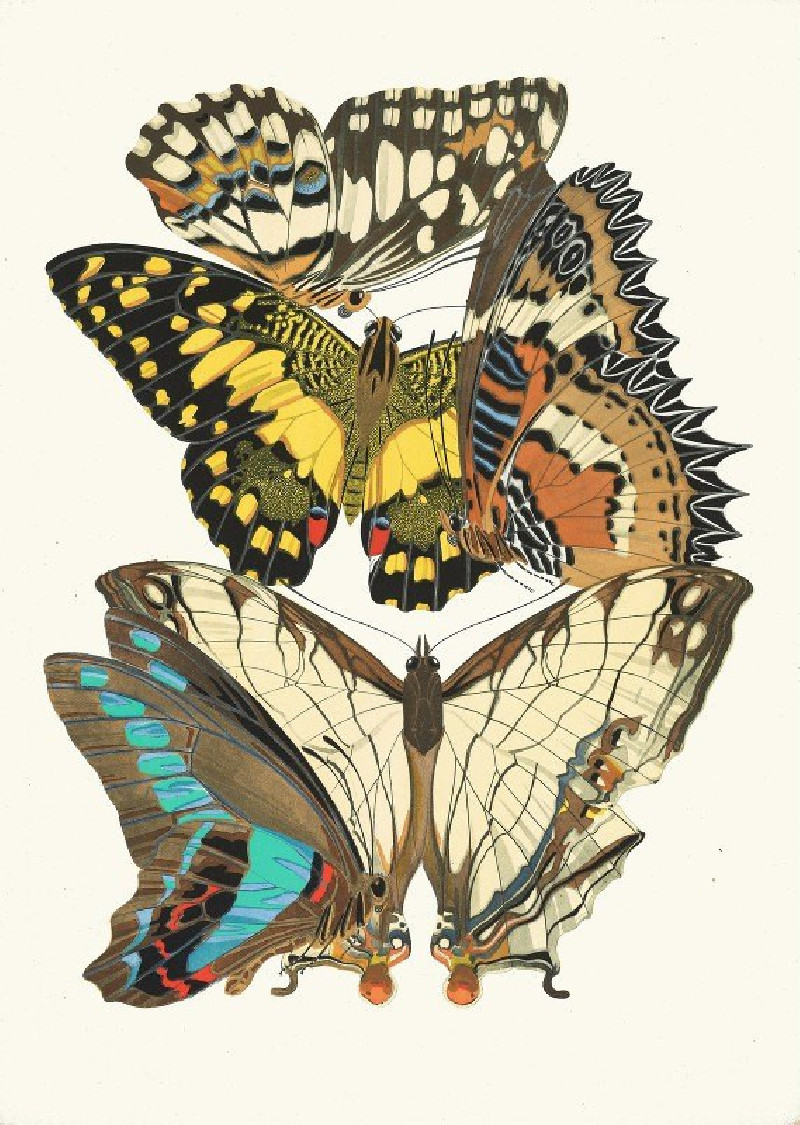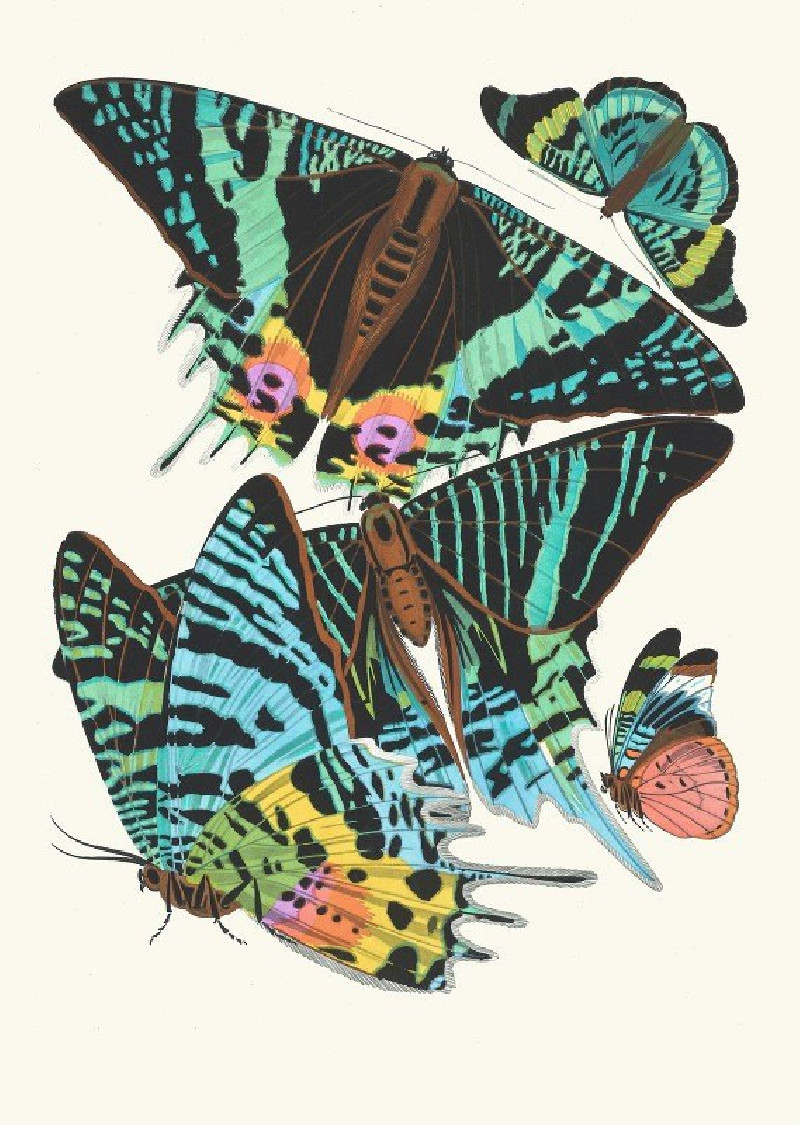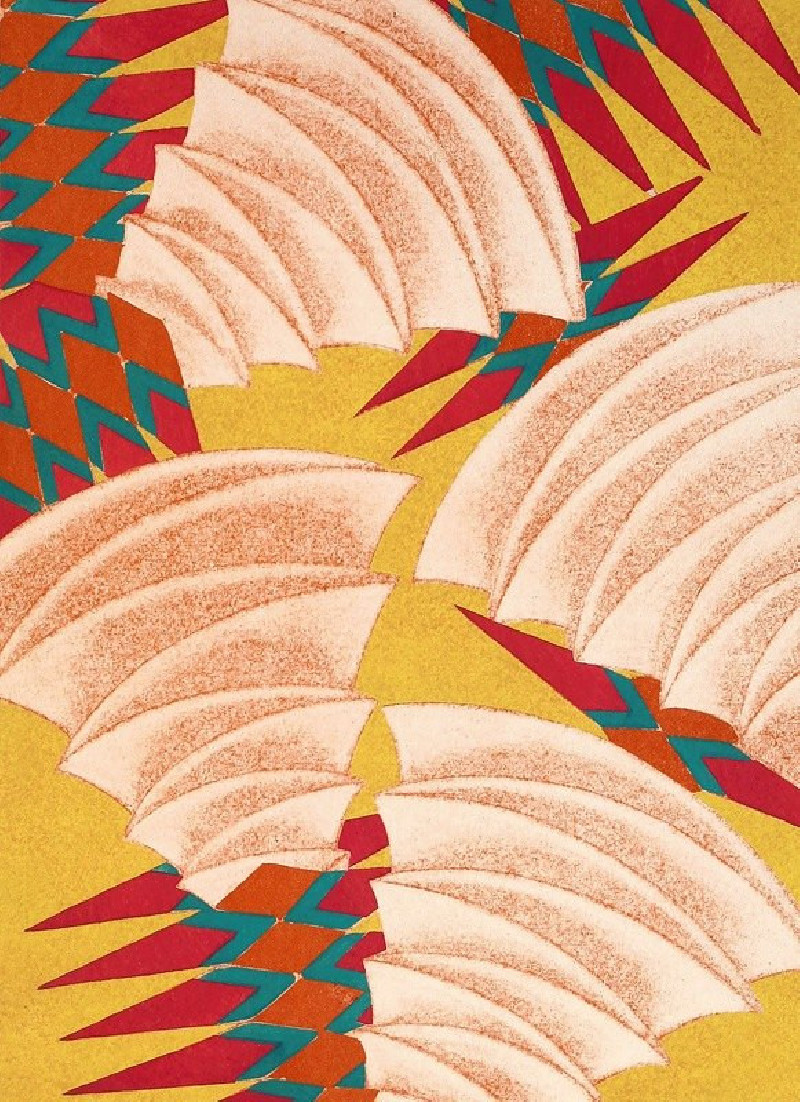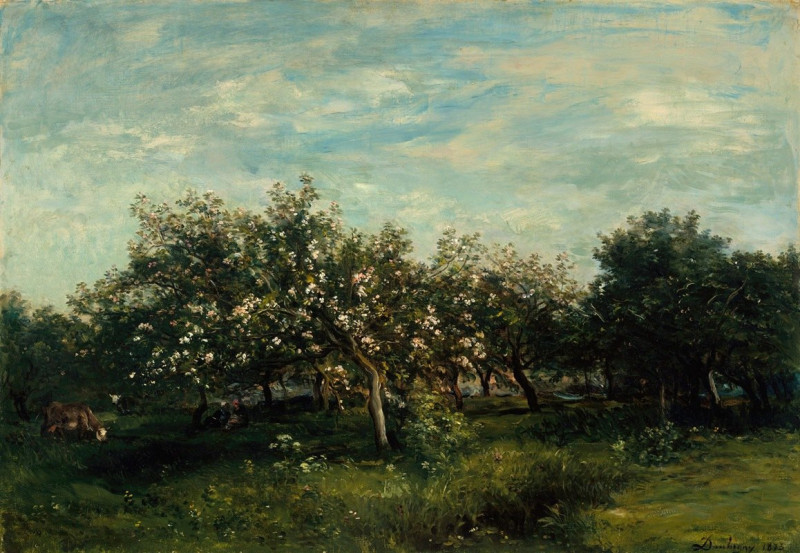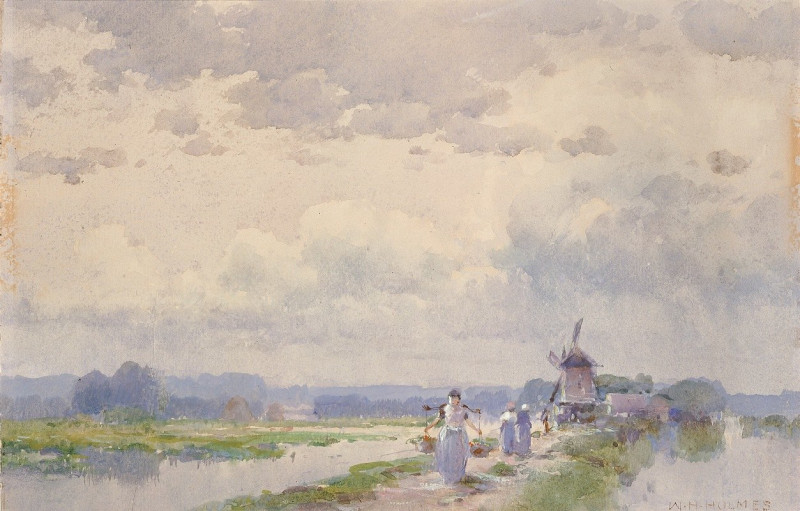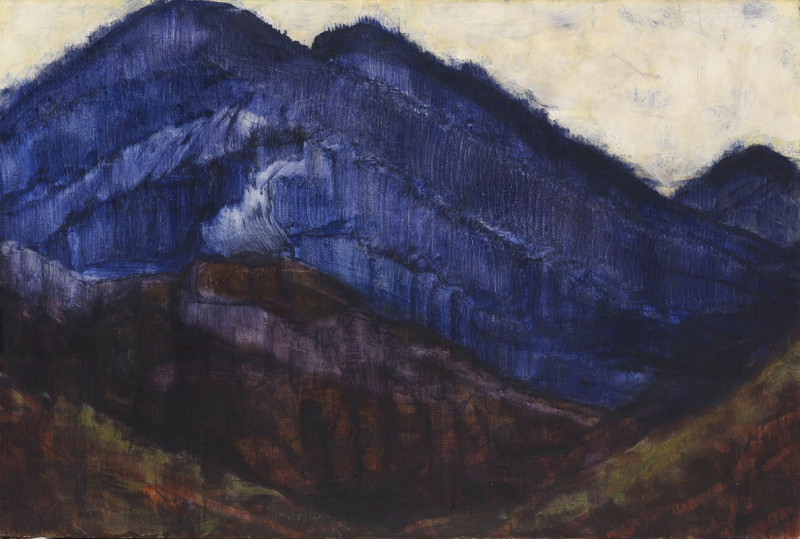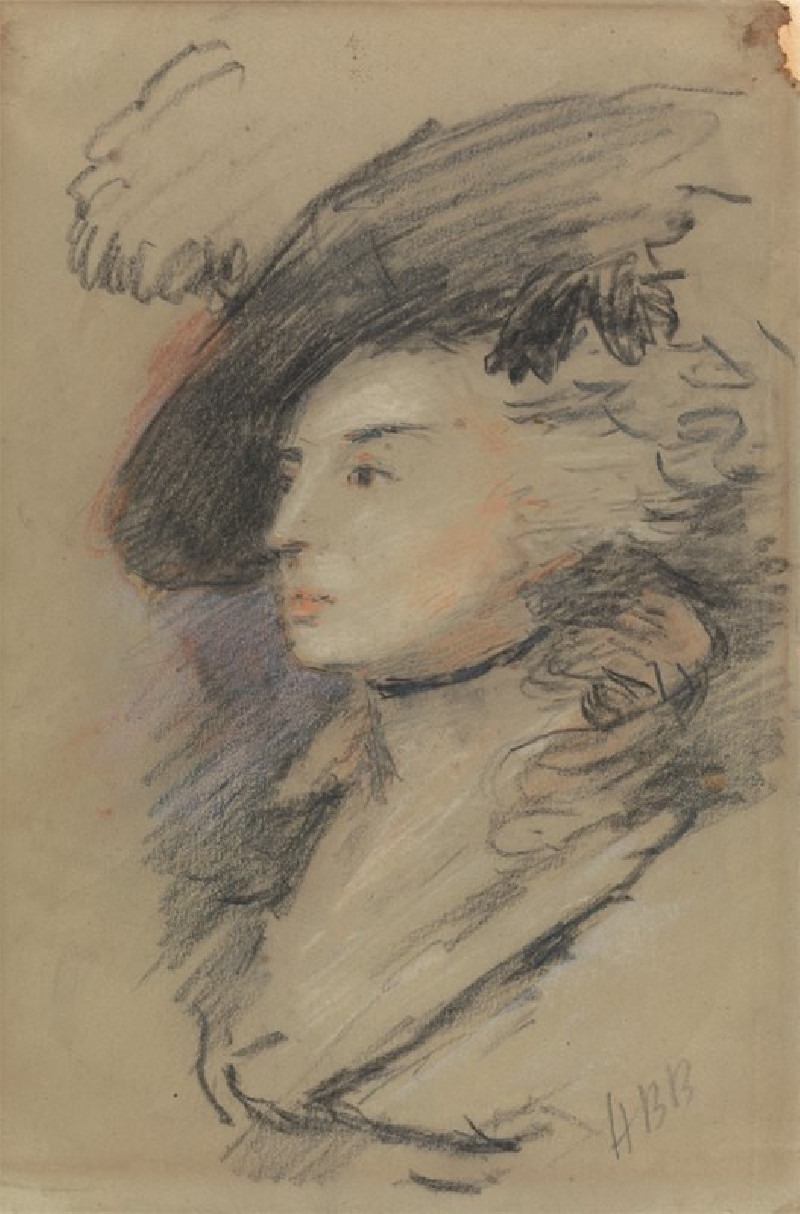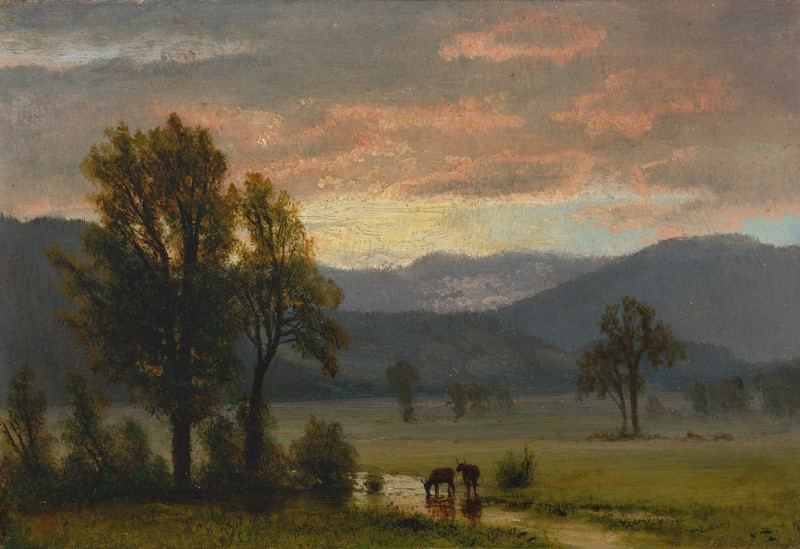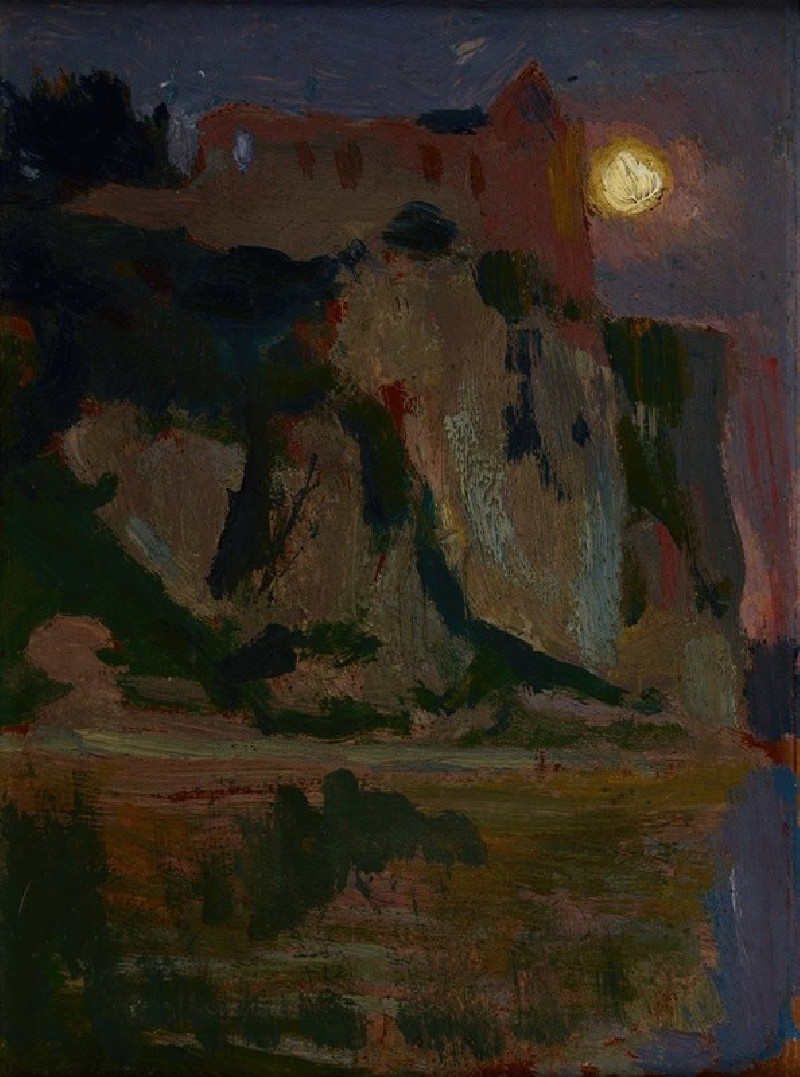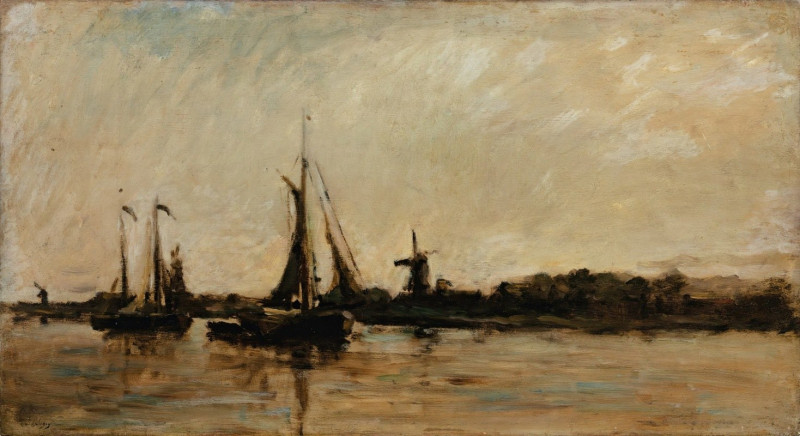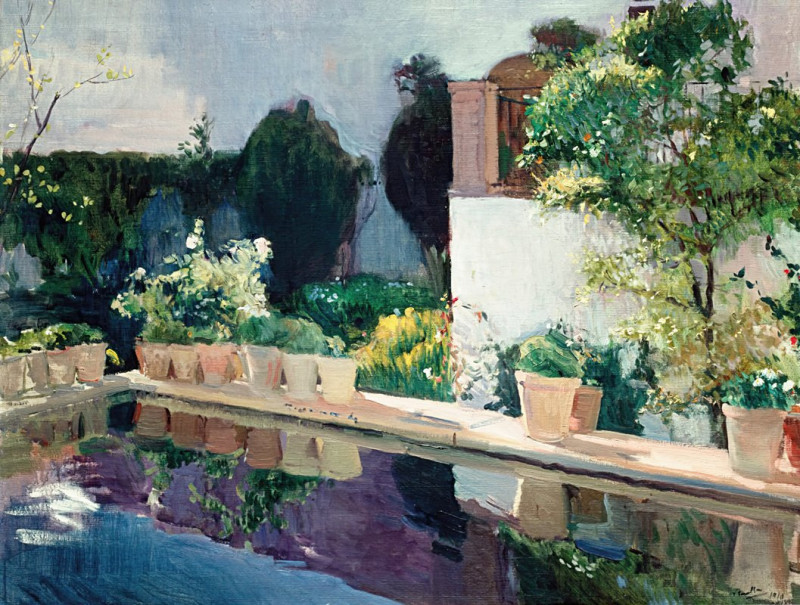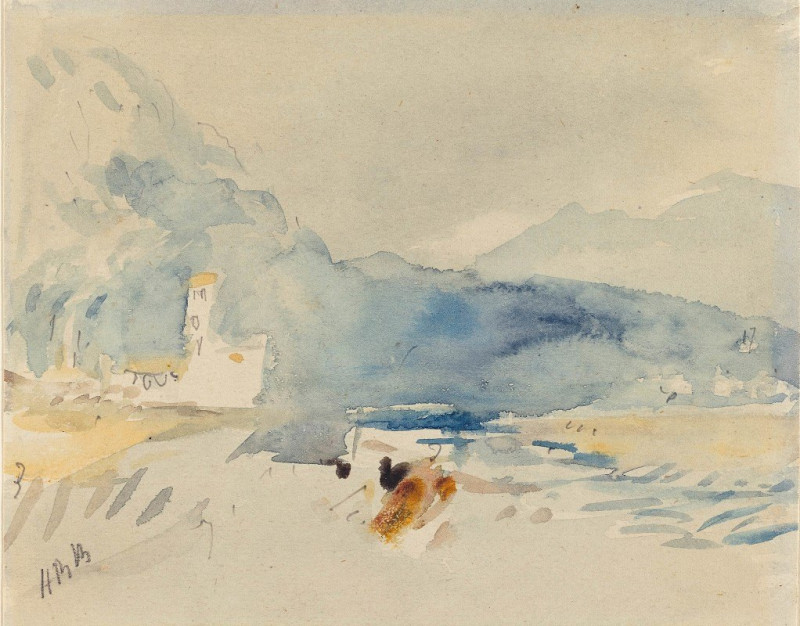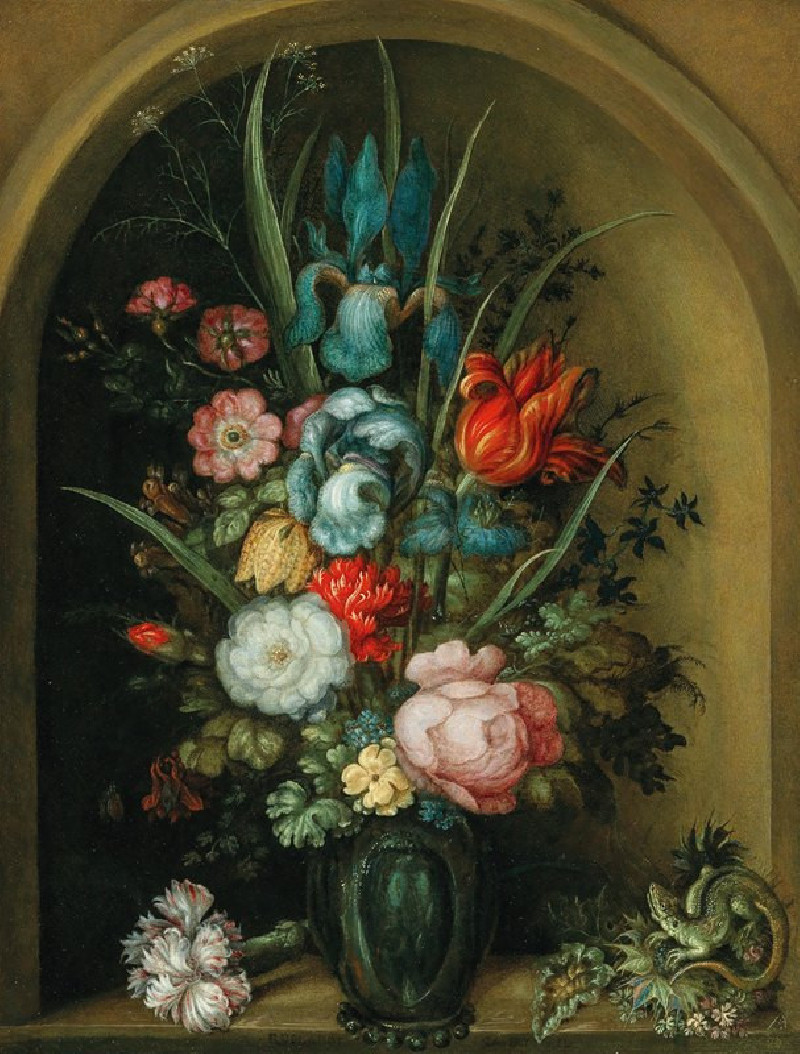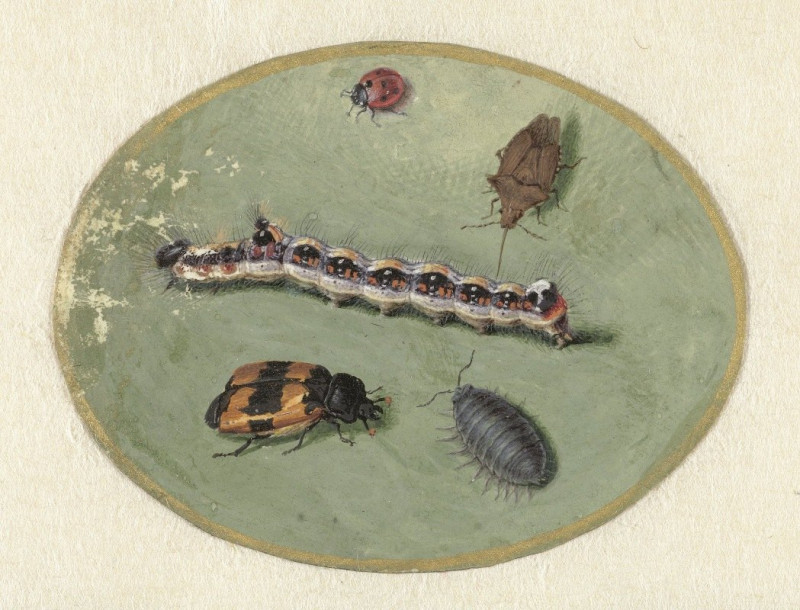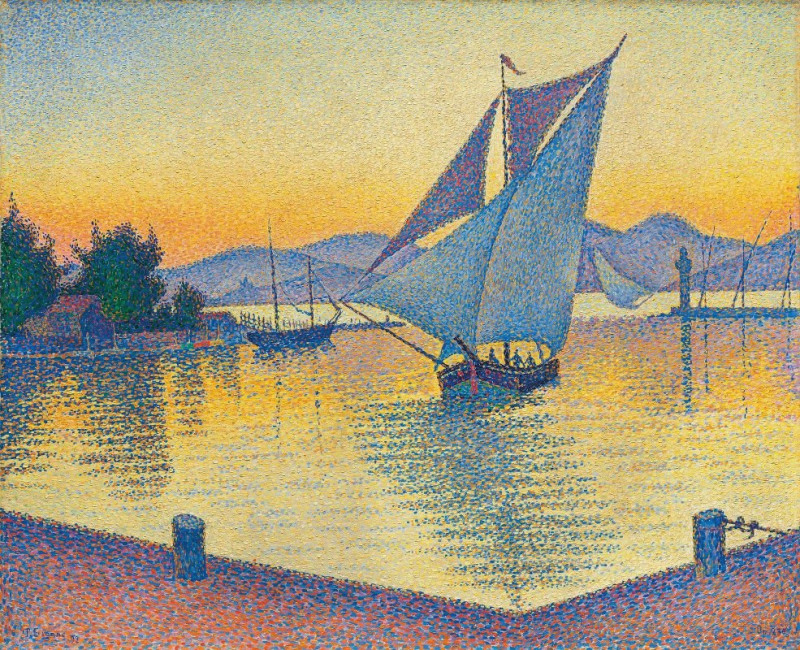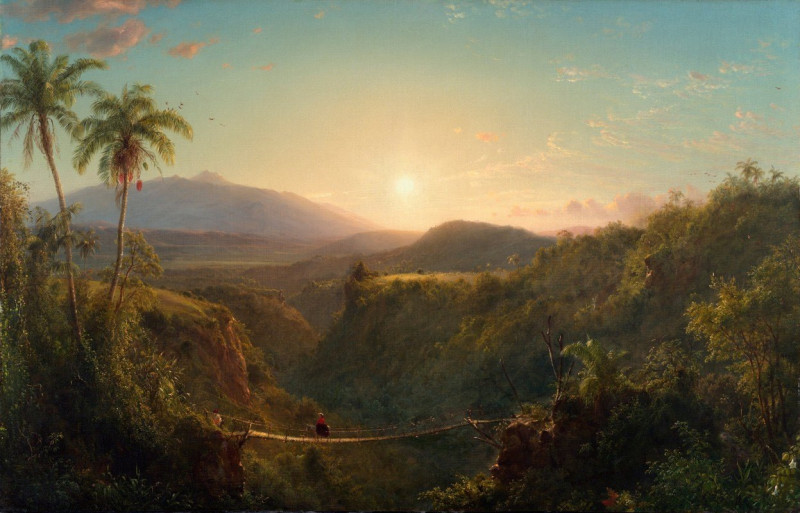Papillons, Pl. 13 (1925)
Technique: Giclée quality print
Recommended by our customers
More about this artwork
Discover the enchanting world of "Papillons, Pl. 13" by Emile-Allain Séguy, a spectacular artwork created in 1925 that delves into the beauty of butterflies. This particular plate is part of Séguy’s “Papillons” series, which showcases his mastery in capturing the intricate details and vibrant colors of these delicate creatures.In this vivid portrayal, several butterflies are illustrated in mid-flight, each rendered with a remarkable level of detail that highlights their unique patterns and hues. The painting features a breathtaking palette of colors—from deep blues and vivid greens to soft oranges and bold browns—bringing each butterfly to life against a stark, contrasting background.Séguy's work not only celebrates the natural beauty of butterflies but also demonstrates his skills in the Art Deco style, characterized by bold geometric forms and rich colors. "Papillons, Pl. 13" serves as a stunning reminder of nature’s splendor, inviting viewers to appreciate the subtle artistry in the everyday world.
Delivery
Returns
Emile-Allain Séguy was a popular French designer throughout the Art Deco and Art Nouveau movements of the 1920s. Often confused with the French entomologist Eugene Séguy who was active during the same time period, E.A. Séguy designed primarily patterns and textiles and was heavily influenced by the natural world. He was particularly fond of the intricate patterns and beauty of insects (Eugene would have approved), which he saw as “mechanic wonders” that provided abundant inspiration for interior design (Schiff, 157).

